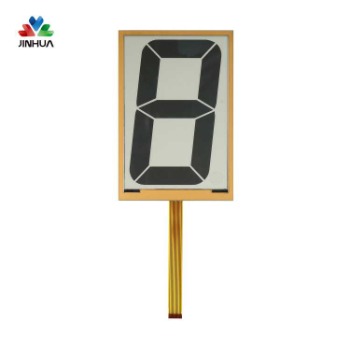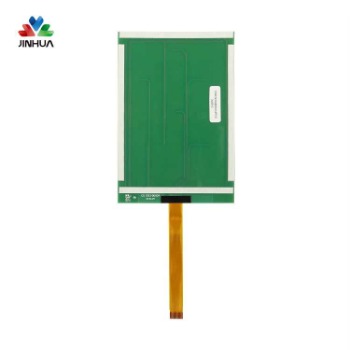LTPS
TFT LCD can be divided into polysilicon (Poly-Si TFT) and amorphous silicon (a-Si TFT). The difference between the two lies in the different transistor characteristics. The molecular structure of polycrystalline silicon is neatly and directionally arranged in a grain, so the electron mobility is 200-300 times faster than that of disorderly arranged amorphous silicon; what is generally called TFT-LCD is Refers to amorphous silicon, which has mature technology and is the mainstream product of LCD. Polysilicon products mainly include high-temperature polysilicon (HTPS) and low-temperature polysilicon (LTPS).
Low Temperature Poly-silicon (LTPS) thin film transistor liquid crystal display uses excimer laser as a heat source during the packaging process. After the laser light passes through the projection system, a laser beam with even energy distribution will be generated and projected on amorphous silicon. On the structural glass substrate, when the amorphous silicon structural glass substrate absorbs the energy of the excimer laser, it will transform into a polysilicon structure. Since the entire process is completed below 600°C, it can be applied to general glass substrates.
LTPS-TFT LCD has the advantages of high resolution, fast response speed, high brightness, and high aperture ratio. In addition, because the silicon crystal arrangement of LTPS-TFT LCD is more orderly than a-Si, the electron mobility is relatively higher than 100 times. The peripheral driver circuits can be fabricated on the glass substrate at the same time to achieve the goal of system integration, saving space and the cost of the driver IC.
At the same time, because the driver IC circuit is directly produced on the panel, it can reduce the external contacts of the component, increase reliability, simplify maintenance, shorten assembly process time and reduce EMI characteristics, thereby reducing the application system design process and expanding design freedom.
The highest technology of LTPS-TFT LCD is System on Panel. The first generation LTPS-TFT LCD uses built-in drive circuits and high-performance pixel transistors to achieve high resolution and high brightness, which has made LTPS-TFT LCD and a-Si Makes a huge difference.
The second generation LTPS-TFT LCD has reduced power consumption through the advancement of circuit technology, from an analog interface to a digital interface. The carrier mobility of this generation of LTPS-TFT LCD is 100 times that of a-Si small TFT screen, and the electrode pattern line width is about 4 μm. The characteristics of LTPS-TFT LCD have not yet been fully utilized.
The third generation LTPS-TFT LCD has more complete integration of peripheral large-scale integrated circuits (LSI) than the second generation. Its purpose is: (1) The absence of peripheral parts can make the module thinner and lighter, and can also reduce the number of parts and assembly hours; ( 2) Simplified signal processing can reduce power consumption; (3) Equipped with memory to minimize power consumption.
Because LTPS-TFT LCD displays have the advantages of high resolution, high color saturation, and low cost, they are highly expected to become a new wave of displays. With its high circuit integration characteristics and low cost, it has absolute advantages in the application of small and medium-sized display panels.
However, p-Si round TFT display currently has two problems. One is that the off-state current (i.e. leakage current) of LCD TFT screen is large (Ioff=nuVdW/L); on the other hand, it is difficult to prepare high-mobility p-Si materials in large areas at low temperature and the process There is a certain degree of difficulty.
It is a new generation of technology product derived from TFT LCD. LTPS screens are manufactured by adding a laser processing process to traditional amorphous silicon (a-Si) TFT-LCD panels. The number of components can be reduced by 40%, and the connection parts can be reduced by 95%, greatly reducing product failures. probability. This kind of screen has greatly improved in terms of energy consumption and durability. The horizontal and vertical viewing angles can reach 170 degrees, the display response time reaches 12ms, the display brightness reaches 500 nits, and the contrast ratio reaches 500:1.
There are two main ways to integrate low-temperature p-Si drivers:
The first is the hybrid integration method of scanning and data switches, that is, row circuits are integrated together, switches and shift registers are integrated in column circuits, and multi-channel addressing drivers and amplifiers are externally connected to the flat panel display using inheritance circuits;
Second, all drive circuits are fully integrated on the display screen;
Third, the drive and control circuits are integrated on the display screen.
TFT (Thin Film Transistor) LCD, Thin Film Field Effect Transistor LCD, is a type of active matrix type liquid crystal display (AM-LCD).
LCD flat panel displays, especially TFT-LCDs, are currently the only display devices that can catch up with and exceed CRT in comprehensive performance such as brightness, contrast, power consumption, lifespan, volume and weight. It has excellent performance and good mass production characteristics. With a high degree of automation, low raw material costs and broad development space, it will quickly become a mainstream product in the new century and a highlight of global economic growth in the 21st century.
Main feature
Different from TN technology, TFT display adopts "back-transmission" illumination method - the imaginary light source path is not from top to bottom like TN liquid crystal, but from bottom to top. This method is to set up a special light pipe on the back of the liquid crystal, and when the light source is illuminated, it shines upward through the lower polarizing plate. Since the upper and lower interlayer electrodes are changed to FET electrodes and common electrodes, when the FET electrodes are turned on, the behavior of the liquid crystal molecules will also change. The purpose of display can be achieved by shading and transmitting light, and the response time is greatly increased to about 80ms. Because it has higher contrast and richer colors than TN-LCD, and the screen update frequency is faster, TFT is commonly known as "true color".
Compared with DSTN, the main feature of TFT-LCD is to configure a semiconductor switching device for each pixel. Since each pixel can be controlled directly via point pulses. Therefore, each node is relatively independent and can be continuously controlled. This design method not only improves the response speed of the display screen, but also allows precise control of the display grayscale. This is why TFT colors are more realistic than DSTN.0






 English
English Deutsch
Deutsch русский
русский español
español العربية
العربية



 IPv6 network supported
IPv6 network supported
